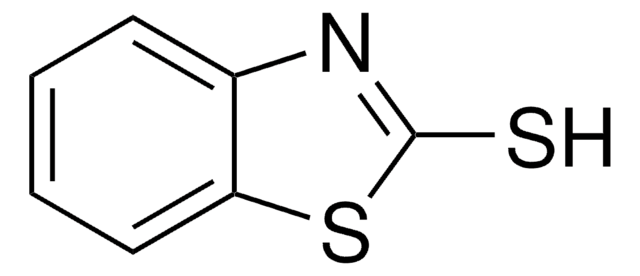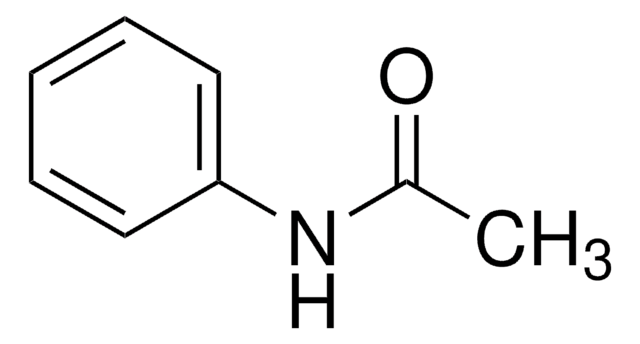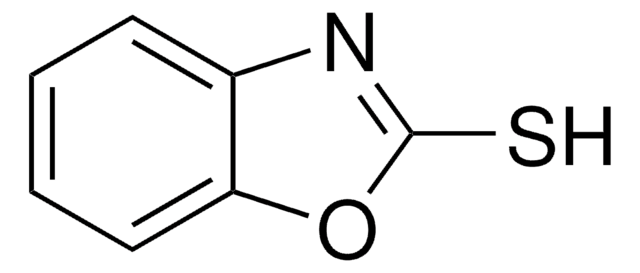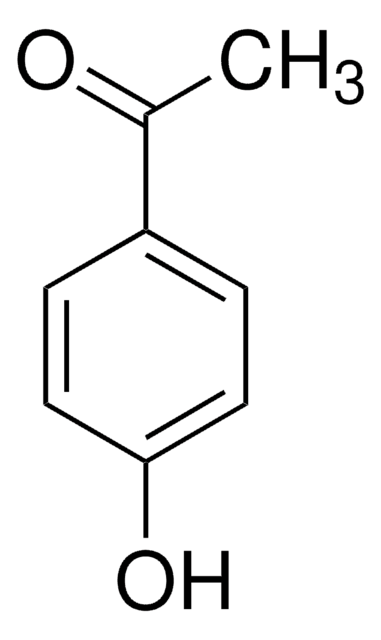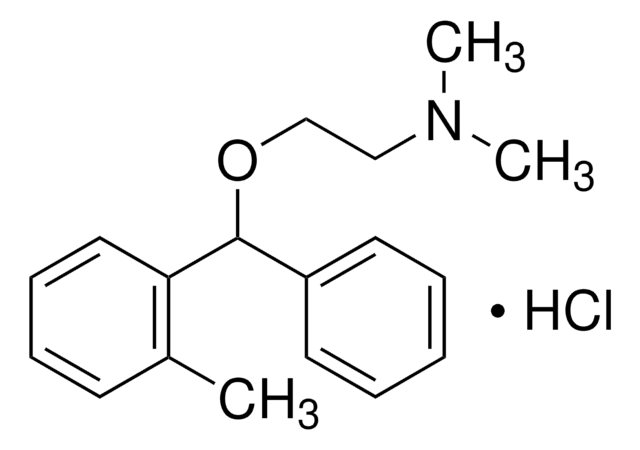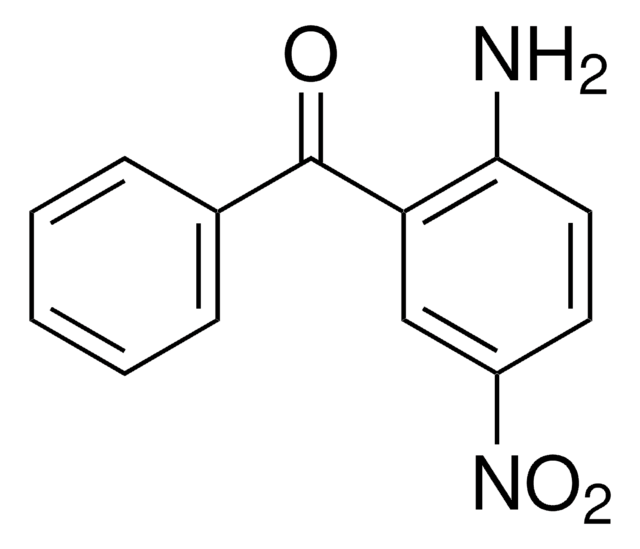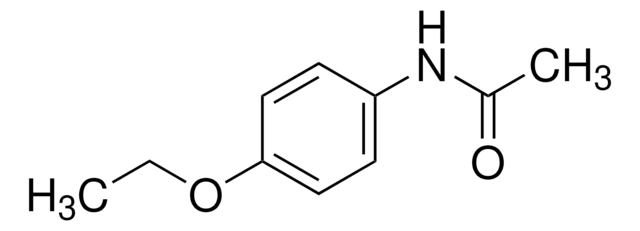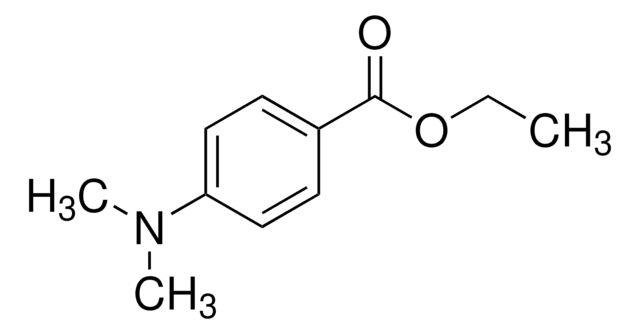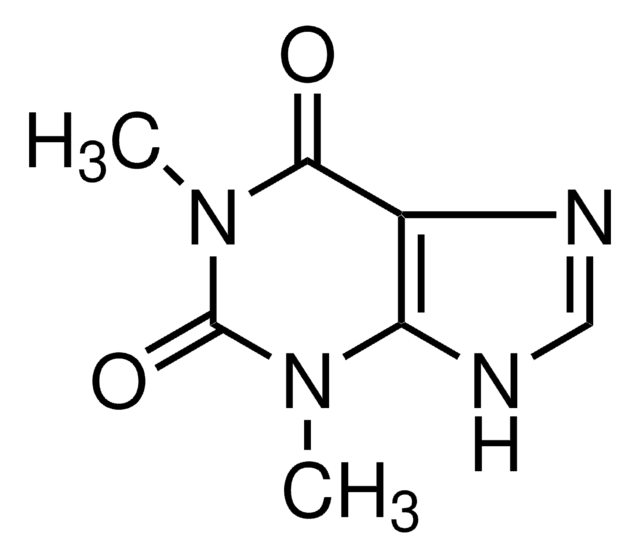SML0602
Propiverine hydrochloride
≥98% (HPLC)
Synonym(e):
α,α-Diphenyl-α-propoxyacetic acid hydrochloride 1-methyl-4-piperidyl ester, α-Phenyl-α-propoxybenzeneacetic acid 1-methyl-4-piperidinyl ester hydrochloride, (1-Methylpiperidin-1-ium-4-yl) 2,2-diphenyl-2-propoxyacetate chloride, 1-Methyl-4-piperidyl diphenylpropoxyacetate hydrochloride
About This Item
Empfohlene Produkte
Qualitätsniveau
Assay
≥98% (HPLC)
Form
powder
Lagerbedingungen
desiccated
Farbe
white to beige
Löslichkeit
H2O: 5 mg/mL, clear (warmed)
Lagertemp.
2-8°C
InChI
1S/C23H29NO3.ClH/c1-3-18-26-23(19-10-6-4-7-11-19,20-12-8-5-9-13-20)22(25)27-21-14-16-24(2)17-15-21;/h4-13,21H,3,14-18H2,1-2H3;1H
InChIKey
KFUJMHHNLGCTIJ-UHFFFAOYSA-N
Allgemeine Beschreibung
Biochem./physiol. Wirkung
Leistungsmerkmale und Vorteile
Signalwort
Danger
H-Sätze
Gefahreneinstufungen
Eye Dam. 1 - Skin Irrit. 2 - STOT SE 3
Zielorgane
Respiratory system
Lagerklassenschlüssel
11 - Combustible Solids
WGK
WGK 3
Flammpunkt (°F)
Not applicable
Flammpunkt (°C)
Not applicable
Analysenzertifikate (COA)
Suchen Sie nach Analysenzertifikate (COA), indem Sie die Lot-/Chargennummer des Produkts eingeben. Lot- und Chargennummern sind auf dem Produktetikett hinter den Wörtern ‘Lot’ oder ‘Batch’ (Lot oder Charge) zu finden.
Besitzen Sie dieses Produkt bereits?
In der Dokumentenbibliothek finden Sie die Dokumentation zu den Produkten, die Sie kürzlich erworben haben.
Artikel
Muscarinic acetylcholine receptors are G protein-coupled receptors (GPCRs) and mediate acetylcholine actions in the CNS and non-nervous tissues. Learn more about acetylcholine receptors and their role in cell signaling.
Unser Team von Wissenschaftlern verfügt über Erfahrung in allen Forschungsbereichen einschließlich Life Science, Materialwissenschaften, chemischer Synthese, Chromatographie, Analytik und vielen mehr..
Setzen Sie sich mit dem technischen Dienst in Verbindung.